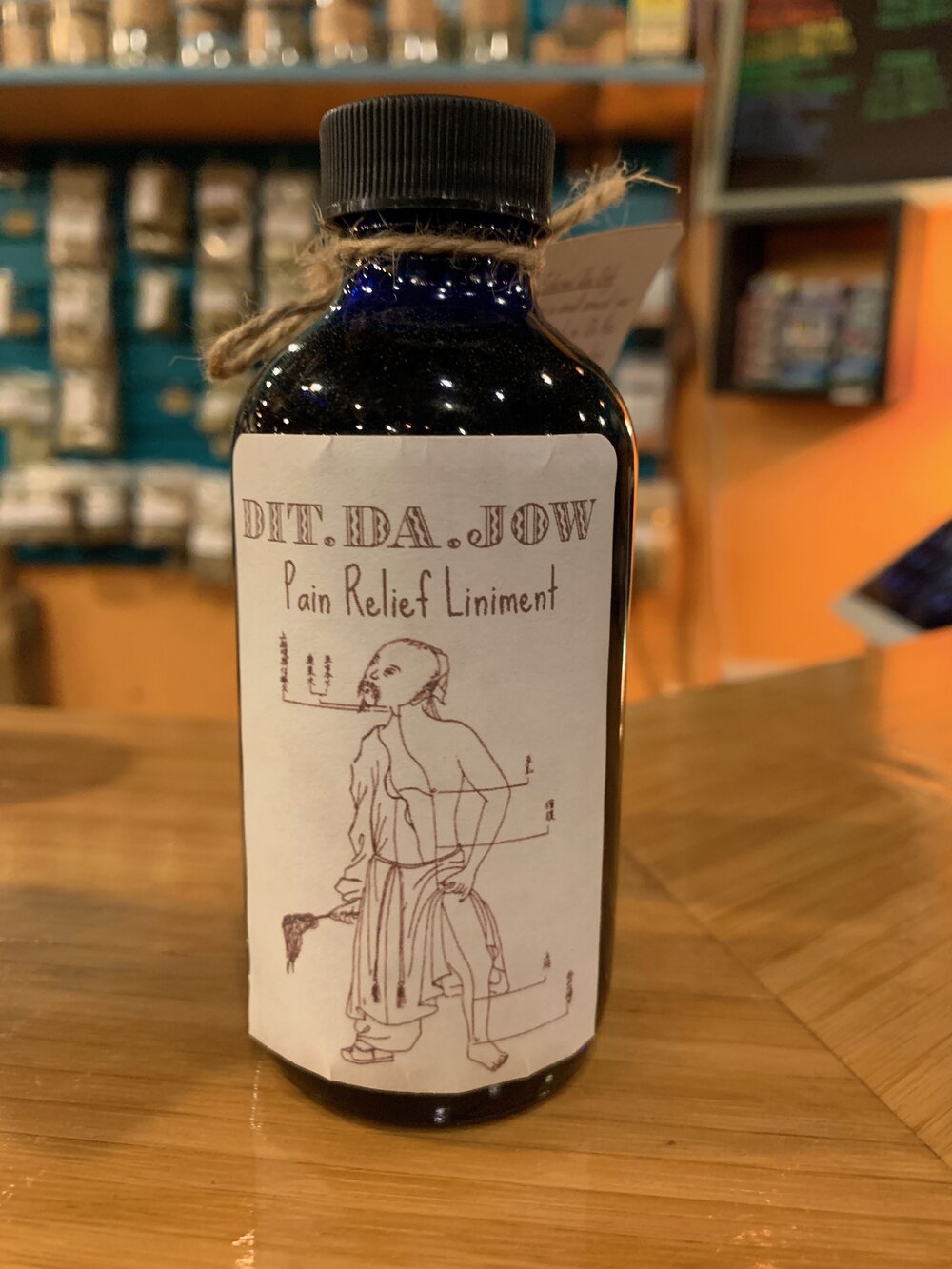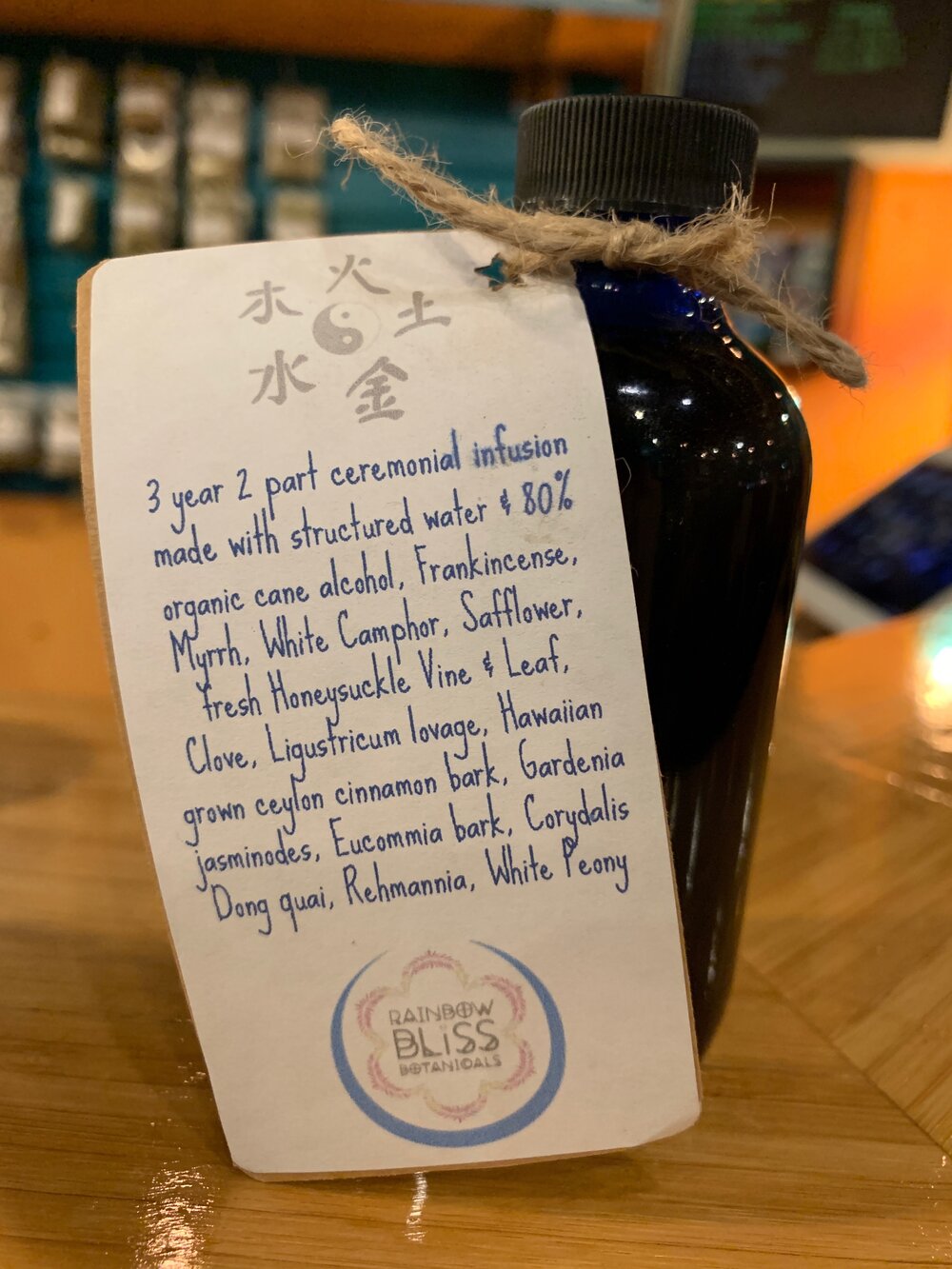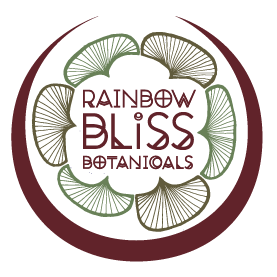Rainbow Bliss Botanicals
Honeysuckle Dit Da Jow
Honeysuckle Dit Da Jow
Couldn't load pickup availability
4 oz. (120 mL)
What is Dit Da Jow?
Blood carries our memories, our traumas, and our oxygen. As a transporter of critical system components, the blood must always move in a balanced & functional way.
Injuries are caused by long-term continued impact, improper injury prevention such as not stretching or showing off moves to your friends your body isn't ready for, or a lack of self-care practices like Qi Gong & Yoga. Acute injuries and blows are caused by trauma and force. Both of these lead to body pain, which is sharp and fixed in the case of Blood stagnation pain. (Whereas Qi stagnation pain fluctuates and relocates.) To improve the quality and function of blood circulation; blood-moving and blood-regulating herbs can be applied topically.
Dit da jowis an analgesic liniment traditionally preferred by martial artists. ... Dit da jow opens blockages allowing the qi to flow freely to the injury to quicken healing and promote blood-circulation. Regularly incorporating Dit Dat Jow foot baths into a neuropathy or MS home-care regimen has shown positive results in increasing sensation and improving motor coordination. Dit da jowis made from herbs, roots, flowers infused into alcohol and strained to make a liquid extract concentrate - this is super traditional old-school TCM at its finest.
How to use: This formula is excellent to use for any kind of external injury. You don't have to be a martial artist to use it. It is perfect for bruises, muscle strains, pulled muscles, sprains or any other kind of injury related to work or sports. Apply it by pouring a small amount over the injured area and rub in. Do this several times, waiting a few minutes between applications to it to dry. For best results apply 2-3 times per day. You should find that your injuries will heal in about one-half to one-third of the normal time. The only contraindication would be not to apply to an area where the skin is broken.
If you are a martial artist and want to toughen your fists, arms or shins, you should apply this after your conditioning exercises. You will recuperate faster which will allow you to continue with your practice.
What's in it?
Myrhh is epic..truly a favorite of mine! Myrhh (Commiphora myrrha) alchemically resonates with lunar energy, connects mother to child, woman to womb, and the element silver. This neutral, bitter, spicy gum resin is a carminative, disinfectant, emmenagogue, antispasmodic, and stimulant. Myrrh moves Blood more than Frankincense, which moves Qi. Together, this pair is totally divine for pain and rheumatism. Myrrh "purges stagnant blood out of the uterus," so it's fantastic for uterine tumors and amenorrhea. Personally, I use the essential oil on canker sores, for ear aches, and I put it in my belly button to promote movement of menses. For circulatory assistance, Myrrh oil or powdered resin or tincture can be added to wine and drank or applied topically as a medicated oil.
Frankincense (Boswellia carteri) is a warm, spicy, bitter, golden resinous exudate associated with the sun, the masculine, and brings solar light into the Crown Chakra with calmness and clarity. The cerebral incense and medicine is rich in boswellic acid A and B, bassorin, pinene, dipentene A, and B phellandrene. As a nervine and emmenagogue, antiseptic, and antispasmodic, this Oil or powdered resin or alcohol extract is essential for a first aid kit. For relieving menstrual pains, promoting menstruation, or treating rheumatism; internal use at 3-9grams is great, or topical application on the Heart, Liver, and Spleen meridian acupressure points.
Myrrh (Mo Yao), Frankincense (Ru Xiang), and Corydalis (Yan Hu Suo) are blood-moving resins and herbs that dilate the blood vessels and disperse stagnant blood. In western medicine, these are known as analgesics.
Corydalis is in the Papaveraceae family and contains 40% of the strength of morphine when taken internally for relieving rheumatic, arthritic, menstrual, Heart, Bi & deficiency pains.* The sweet thing is, this warm, acrid, bitter root doesn't cause drowsiness. What an exciting analgesic, antispasmodic, and emmenagogue for these times when pharmaceutical opiate alternatives (Kratom) are being threatened by the government.
Internally, Corydalis can be taken as a method for pain management, opiate withdrawal, and rheumatism relief.
Safflower (Hong Hua) is classified as a vasodilator and analgesic. This is an essential and beautiful blood-moving herb in Dit Dat Jiao topical blends for Kung Fu hit medicine. It can be applied in an alcohol-based extraction for quicker entry to the blood, or as a poultice, salve, or oil. For blood clots, delayed menses, and lower abdominal Blood stagnation related pain, it's better taken internally in a decoction of 3-6grams. For bruising and impact injury, topical application is great.
What we used in ours:
Sedona Spring water and Organic Cane alcohol as base for 3 year ceremonial infusion of:
Frankincense, Myrrh, White Camphor, Safflower, fresh Honeysuckle Vine & Leaf, whole and ground cloves, Ligustricum lovage, Hawaiian grown ceylon cinnamon bark, gardenia jasminodes, eucommia bark, corydalis
28gram Ligustricum lovage (Gao Ben)
28 gram cloves (Ding Xiang)
28 gram cinnamon bark (Rou Gui)
28 gram gardenia jasminoides (Zhi zi)
2oz eucommia bark (Du Zhong)
28gram corydalis powder (Yan Hu Suo)
20 gram forsynthia (Lian Qiao)
Strained and infused into Secondary menstruum extract of Dong Gui 4:2 oz Angelia sinensis (Dang Gui)
2 oz prepared Rhemmania (Shu di Huang)
1 oz Ligusticum lovage (Gao Ben)
2oz White Peony (Bai Shao)




